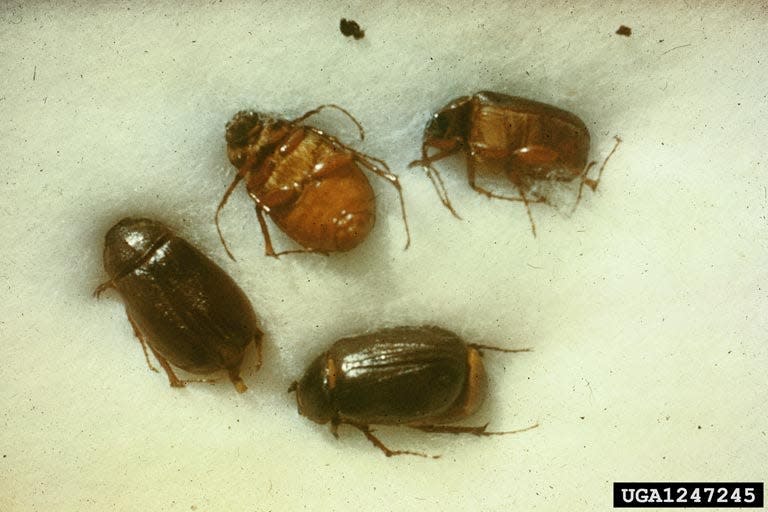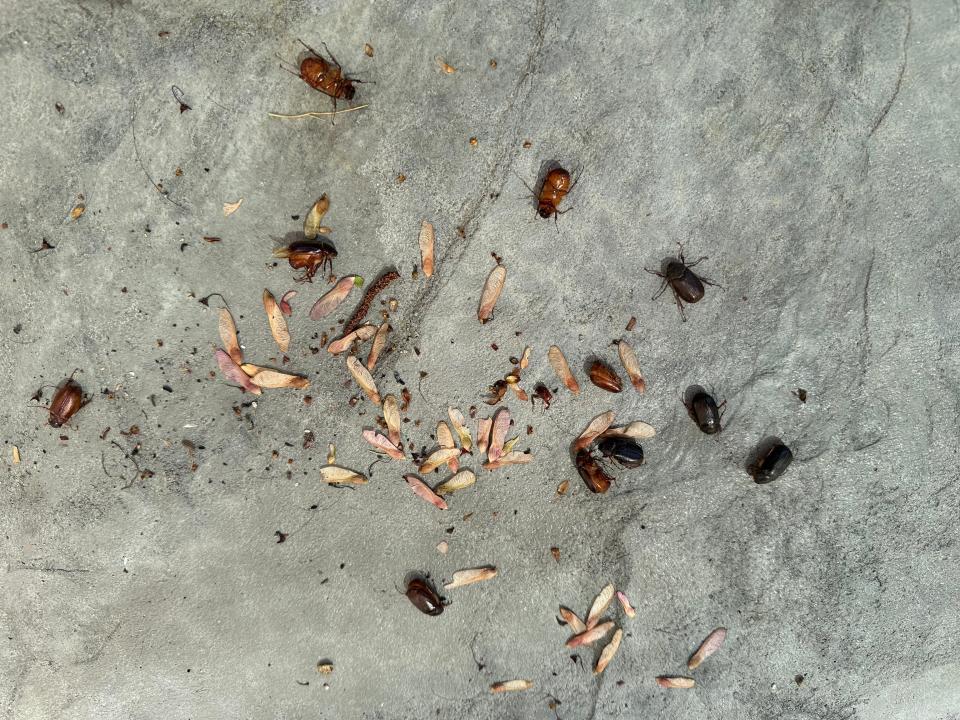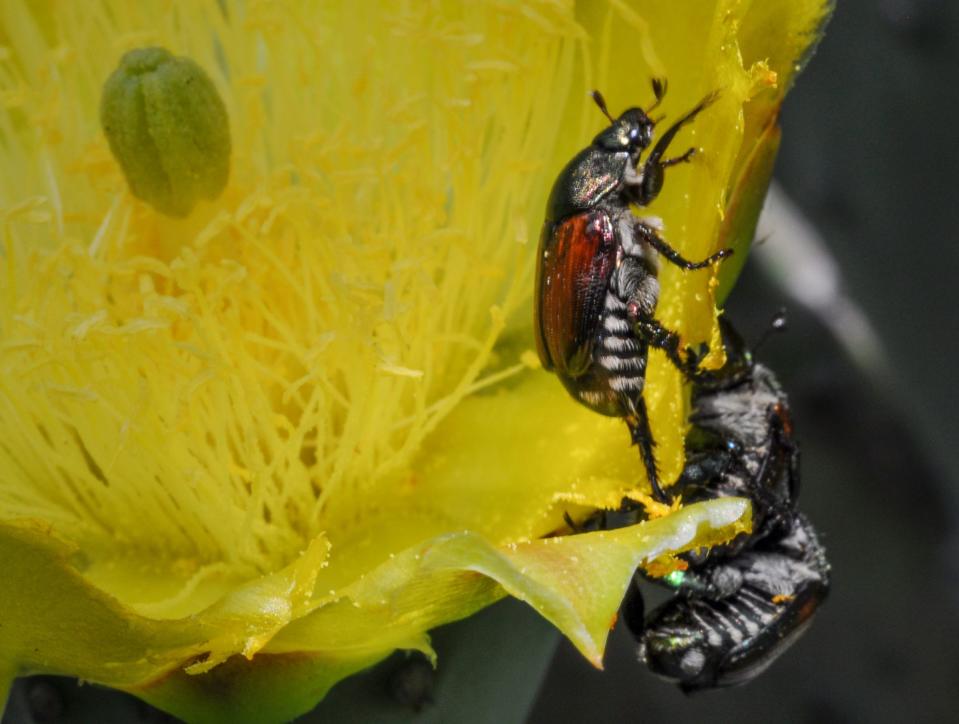It's June bug season. What to know about the seasonal critter and how to get rid of them

June bugs might have a cute name, but there’s nothing cute about the way they gather in droves on front porches, fly into people's hair and wreck yards.
Though their name would indicate an appearance later than April, they've been proliferating in the Houston area and people have reporting further sightings on social media.
“A bug got in the house and the wife is terrified," one man wrote on X on Thursday. "Said she thinks it's a junebug. I told her no way, because it's only April."
Probably a junebug...but I can't wait for the Cicadas to arrive... pic.twitter.com/H0ryJ3o0eG
— SpecialK-17 (@MagickalR) April 30, 2024
These little beetles generally linger through the summer months, in gardens and near outdoor lights.
Here’s what to know about the nocturnal insect, including how to get rid of them, for good.
What’s a June bug?
June bug commonly used to describe scarab beetles, in addition to hundreds of other beetle-like bugs that bare a similar resemblance in terms of size and biology, according to reporting by Good Housekeeping.
These critters might also be known as May bugs, June beetles or even screen-thumpers, depending on where you live, and are characterized by a reddish-brown or almost black color, according to the University of Wisconsin-Madison.
You may even spot June bugs with a vibrant green and bronze color. Though these beetles vary in color, they're generally between one half to an inch long.
Are June bugs dangerous? Do they bite or sting?
June bugs wreak havoc in lawns and gardens but don't pose any threats to humans.
"Their jaws are weak and can pinch, used only in defense," Avery Russell, an assistant professor of biology at Missouri State University, told Good Housekeeping.
It might be a little difficult to get the critter off your skin if it sticks to you, but that's because of its tiny claws, which produce a ticklish effect, according to Good Housekeeping.
"June bugs don't pose any threat to people or pets, and I've never known anyone or anything to be bitten by one of these beetles," David Coyle, an assistant professor of forest health and invasive species at Clemson University, told the publication. "In fact, scarab beetles are revered in ancient Egyptian culture as they were seen as a symbol of renewal and rebirth, which is why you see this type of beetle featured on many ancient artifacts."
They also don't have the ability to damage your home's structure, like a termites would, so don't sweat it too much if they follow you inside. They just really like the light.

Why are they called June bugs?
It's not completely clear how the well-known moniker came about, but it's likely connected to the fact that adult June bugs “emerge from the soil at the end of spring or the beginning of the summer,” according to Terminix, a pest control service.
“Adults are commonly seen emerging in late spring − usually, in May or June," Russell said.
June bugs hatch weeks after they are laid in soil, emerging to feed on grass and plant roots from several months to as long as three years, Terminix writes. They are most active in the evening hours, P.J. Liesch, a University of Wisconsin-Madison entomologist writes.
Where do June bugs thrive?
June bugs can really be seen anywhere, anywhere there is “turf grass, ornamentals, Christmas trees, cranberries, and certain vegetable and field crops," according to the University of Wisconsin-Madison.
They are the ultimate herbivores, feeding on the nearest greenery. Adult June bugs are also known to cause damage to ornamental plants like flowers and trees, according to Liesch.
June bugs and other beetle-like bugs like it spend a majority of their lives underground, coming up to feed on greenery and hang out by outdoor lights.

How do I keep June bugs away?
Before mitigation tactics are discussed, it's best to make sure you actually have a June bug infestation.
Damage to turf grass and dead grass patches are a tell-tale sign that baby June bugs have been munching on the greenery in your yard or garden, Good Housekeeping reported.
Then, a local pest control company can help control the population. Deterrent sprays, an electric light that targets insects, or commercial beetle traps are also available if you’d prefer to take care of the issue yourself.
The best way to prevent June bugs from devouring your lawn is by “making it inhospitable to their larvae,” according to Terminix. “You can help maintain a healthy lawn by overseeding thinned-out areas of your turf.”
This article originally appeared on USA TODAY: June bug season has begun. What are they and how to keep them away.


